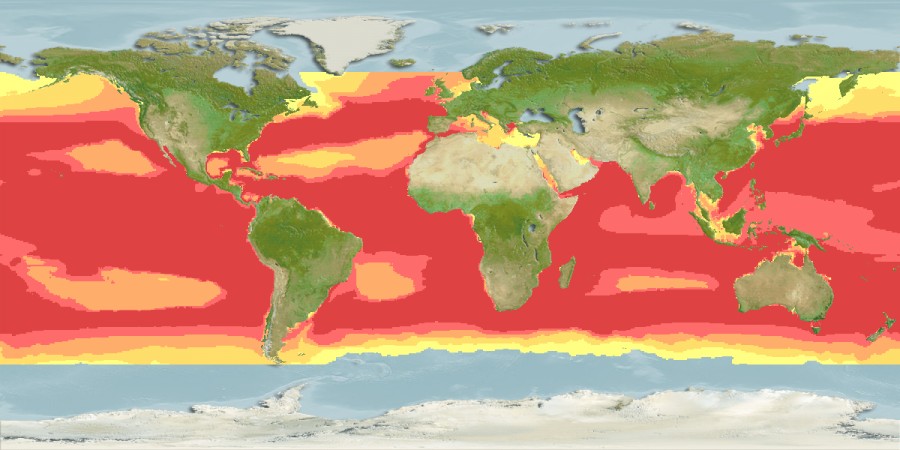Dorsal spines (total): 0; Anal spines: 0. A large, spindle-shaped shark with large black eyes, a sharp snout, and large, narrow, hooked teeth with smooth edges. Caudal fin lunate, lower lobe strongly developed. Dark blue above, white below. Tiny second dorsal and anal fins. Pelagic-oceanic; oceanodromous; marine; depth range 0 - 740 m, usually 100 - 150 m. Subtropical.
Max length : 400 cm TL male/unsexed; common length : 270 cm TL male/unsexed; max. published weight: 505.8 kg; max. reported age: 25 years.
Source: FishBase. Fishbase: Compagno, L.J.V. 1984.

